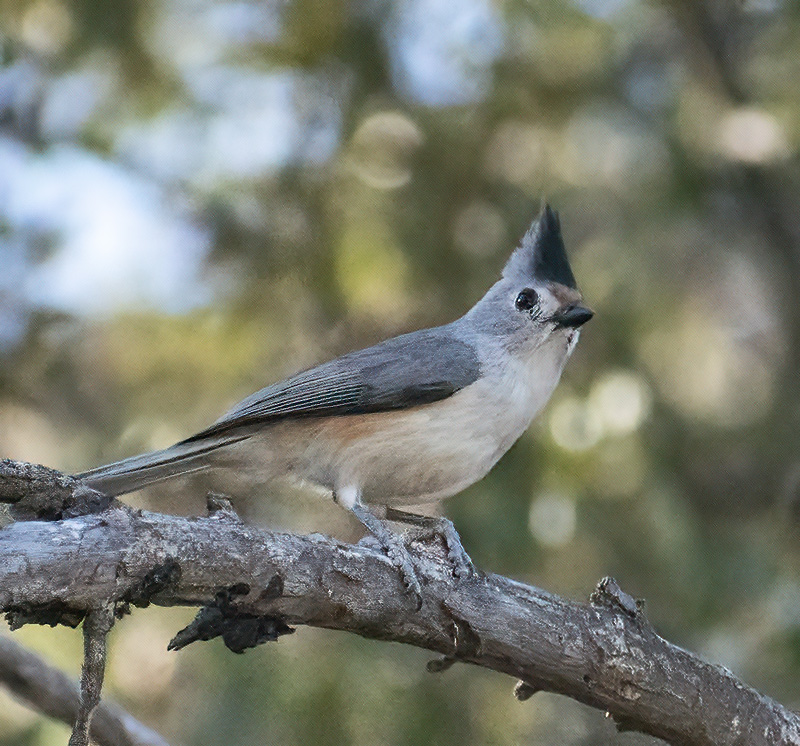
By Grace Huffman
Chances are while out walking in the woods or even at your backyard feeders you’ve seen a Tufted Titmouse. These cute little birds dart in and out grabbing sunflower seeds and dashing off to eat them or cache them under tree bark to eat at a later date. But did you know we have other species of titmice? Altogether Oklahoma has 3 species: Tufted Titmouse, Juniper Titmouse, and Black-crested Titmouse.
Juniper Titmouse is very hard to find in the tip of the Oklahoma panhandle. Black-crested Titmouse is not quite as hard to find, but you won’t see one at your backyard feeders here in central Oklahoma. Their range is almost entirely confined to Texas and Mexico, with a teeny portion of their range extending into southwest Oklahoma.
Black-crested Titmice are very similar in appearance to Tufted Titmice, and you can find them both in the same areas, where they are known to hybridize. They were even previously considered the same species. However, as their name suggests, Black-crested Titmice have a black crest with a pale forehead, whereas Tufted Titmice have a light gray crest with a black forehead. Hybrids have a dark gray crest and brownish forehead. They also sound a bit different, with Black-crested sounding more like “peer peer peer” and Tufted sounding more like “peter peter peter,” but this takes some practice learning to tell the difference!
Black-crested Titmice love the woods, and aren’t picky about elevation. They can be found across their range from nearly sea level to 8,000 feet! They do prefer when there are lots of oaks mixed in. They nest in old woodpecker cavities or nest boxes, and will line the inside with softer materials. Like their cousins, they will come to bird feeders for sunflower seeds as well as foraging for insects and other seeds. Their population is considered stable or slightly declining, with the biggest factor being habitat degradation.
Here in Oklahoma, your best chance to see a Black-crested Titmouse is around the Eldorado area. However, on my most recent trip with a couple of birders to southwest Oklahoma back in February, I had the unique experience of finding one a bit north of its usual range, along with a hybrid! While I wasn’t able to get any photos of the hybrid, I photographed this bird at Quartz Mountain State Park, near the Foggy Bottom restaurant back in February.
Reference: allaboutbirds.org
